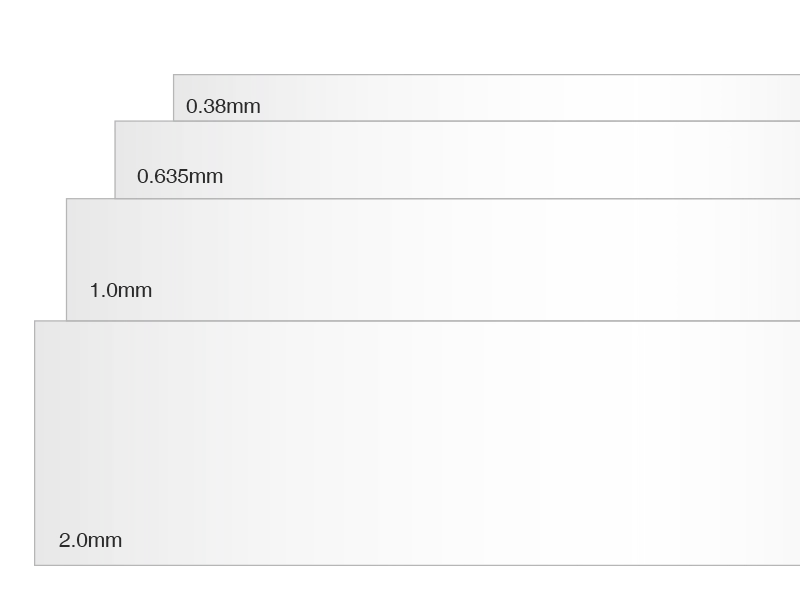Custom Chrome on Quartz Glass Target
High Precision • Custom • MOQ 1pcs
- Good Thermal Expansion Coeff (CTE) performance
- Standard feature size accuracy +/-1μm
- Best feature size accuracy +/-1μm
- Standard feature position accuracy +/-1μm
- Maximum size 1200x850mm
- Smallest line width/ minimum feature size down to 0.5um;
- Graticules, scales, reticles, pin holes, apertures, calibration targets, resolution targets, test targets
Precision Standards
When sub-micrometer accuracy is non-negotiable
0.1μm
0.5μm
5×10⁻⁷/°C
Thermal Expansion
1200×850mm
Max Size
| Accuracy Specification | ||
|---|---|---|
| Feature Size Accuracy | Dot Diameter (mm) | ±0.001 / ±0.0001 |
| Square/Checker Size (mm) | ±0.001 / ±0.0001 | |
| Line Width (mm) | ±0.001 / ±0.0001 | |
| Circularity (mm) | 0.001 | |
| Line Straightness (mm) | 0.001 | |
|
Feature Spacing Accuracy (Any 2 Neighbor Features) |
Dot Spacing (mm) | ±0.001 / ±0.0001 |
| Chessgrid Corner to Corner Spacing (mm) | ±0.001 / ±0.0001 | |
| Line Spacing (mm) | ±0.001 / ±0.0001 | |
|
Distance Accuracy (mm) (from Chrome Pattern to Target Edge) |
±0.05, ±0.1 | |
|
Feature Position Accuracy (in Entire Pattern Area against ideal position): ChessGrid Corner Position, Circle Position, etc |
Dimension <= 300mm (mm) | ±0.001 |
| Dimension > 300mm (mm) | ±0.003~0.005mm | |
|
Accuracy Certificate (3rd-Party/ CalibVision) |
Available on Request | |
| Minimum Feature Size | ||
|---|---|---|
| Smallest Feature Size | Dot Diameter | Down to 0.5μm |
| Dot Spacing | Down to 0.5μm | |
| Line Width | Down to 0.5μm | |
| Checker Size | Down to 0.5μm | |
| Properties | Value | |
|---|---|---|
| Size Range: Length/Width(mm) | 1×1mm to 1200×850mm | |
| Thickness Options: | 1.5 / 2.3 / 3.0 / 10.0mm | |
| Dimension Tolerance (mm) : | ±0.05mm, ±0.1mm | |
| Thickness Tolerance (mm) | ±0.1mm | |
| Edges | Beveled | |
| Angle of the edges | ±1° | |
| Surface Flatness (um) | Dimension <130mm: | ~5μm |
| Dimension 130-220mm: | ~10μm | |
| Dimension 220-450mm: | ~20μm | |
| Dimension 220-450mm: | ~20μm | |
| Surface Roughness | <0.025μm | |
Halcon Calibration Glass Target
- High Position Accuracy
- ±1μm Feature Accuracy
- Laser Writing on Chrome
- 92% Transmission Rate
- Low Thermal Expansion Coeff
Specification Datasheet - Glass Calibration Target
| Accuracy Properties | |||
|---|---|---|---|
| Dot Diameter Accuracy | ±1μm |
Dot Spacing Accuracy (Any 2 Neighbor Features) |
±1μm |
|
Dot Position Accuracy
(Entire Pattern Area against ideal position) |
±1μm (Dimension <= 300mm) |
Distance Accuracy
(from Chrome Pattern to Target Edge) |
±0.05mm, ±0.1mm |
| Optical Properties | |||
| Coating Type |
Bright Chrome (High Reflective) |
Brown Chrome (Low Reflective) |
Blue Chrome (Ultra-Low Reflective) |
| Reflectivity | < 76.4% @550nm | <10% @550nm | < 17% @550nm |
| < 74.5% @650nm | < 17.4% @650nm | < 74.5% @750nm | |
| < 74.5% @750nm | < 17.4% @750nm | < 5.8% @750nm | |
| Coating Thickness | 120nm (±0.20nm) | 100nm (±0.20nm) | 120nm (±0.20nm) |
| Optical Density | OD>3.0 | OD>3.0 | OD>4.5 |
| Physical & Mechanical Properties | |||
| Substrate Material | Soda Lime Glass (Float Glass) | Quartz Glass (Fused Silica) | |
| Transmission (@550nm) | >90% | >95% | |
| Thermal Expansion Coeff (20~200℃) | 8.0 × 10⁻⁶ /K | <5.0x10⁻⁷/K | |
| Expansion Ratio (20~200℃) | 0.00085% (8.5μm/℃ of 1m) | 0.00006% (0.6μm/℃ of 1m) | |
| Surface Flatness | <5μm (Dimension<100mm) | <1μm (Dimension<50mm) | |
| <20μm (Dimension<200mm) | <2μm (Dimension<100mm) | ||
| <50μm (Dimension>200mm) | <5μm (Dimension>200mm) | ||
| Surface Roughness | <0.025μm | ||
| Thickness(mm) | 1.0mm/1.6mm/2.3mm/3.0mm/4.0mm (±0.1mm) options | ||
| Overall Dimension Tolerance(mm) | ±0.05mm, ±0.1mm | ||
| Regulatory Compliance | |||
| ISO9001 | Verified | RoSH 2015 | Compliant |
| Reach 235 | Compliant |
Accuracy Certificate (3rd Party/ CalibVision) |
Available on Request |
Chrome Coating Manufacturing Process Chart
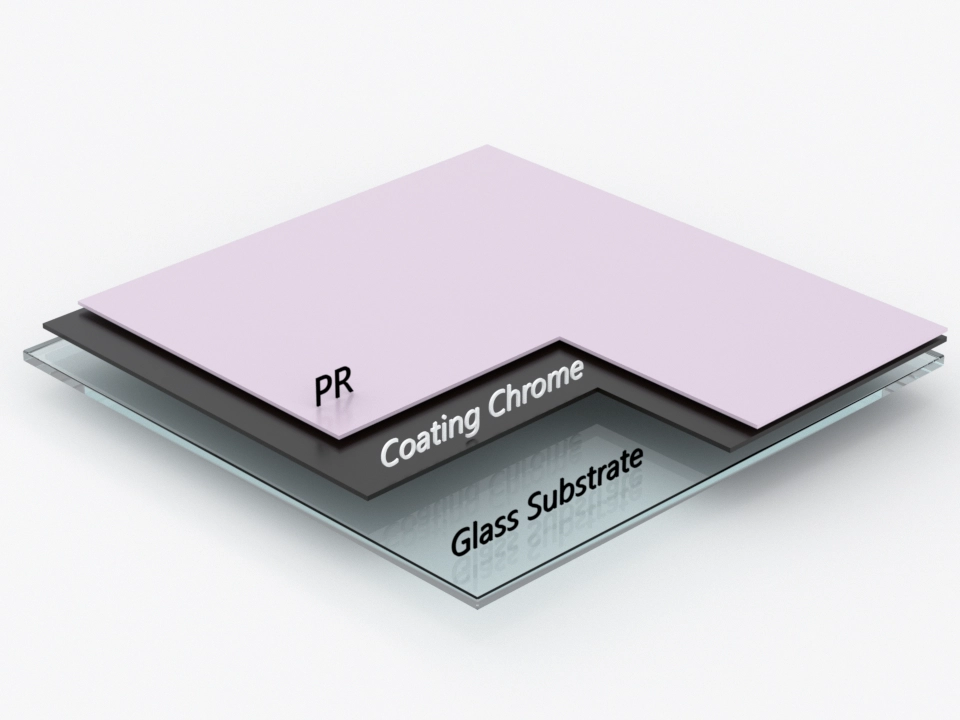
01
Substrate Material
We start with high-quality soda-lime glass or ceramic substrates to ensure stability and long-term precision.
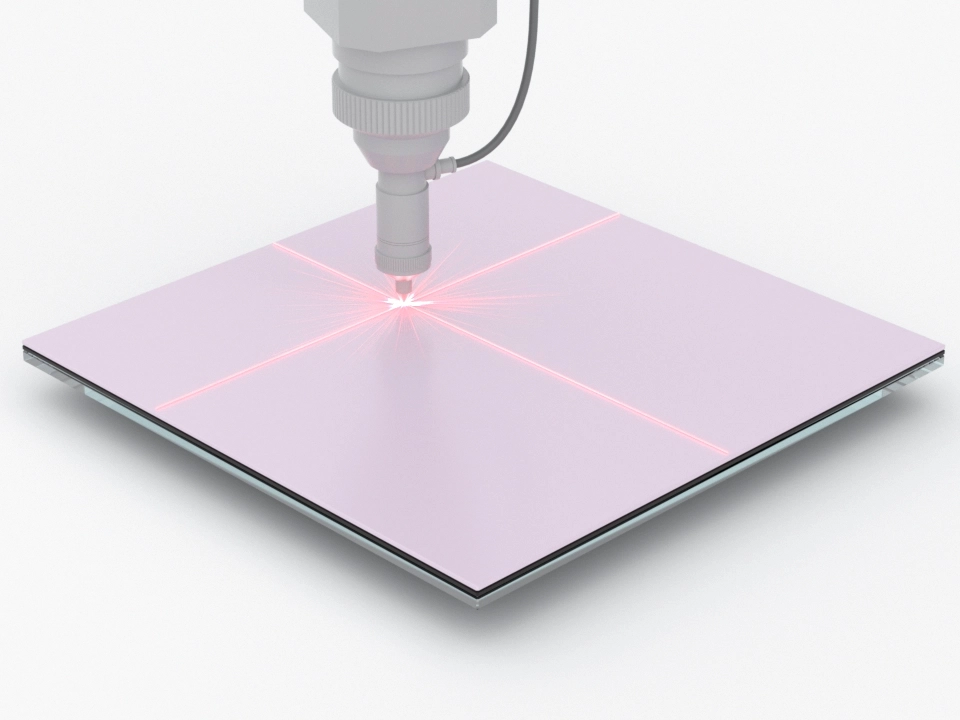
02
Laser Writing
The calibration pattern is written onto the coated chrome layer using a high-precision laser system for consistent accuracy.
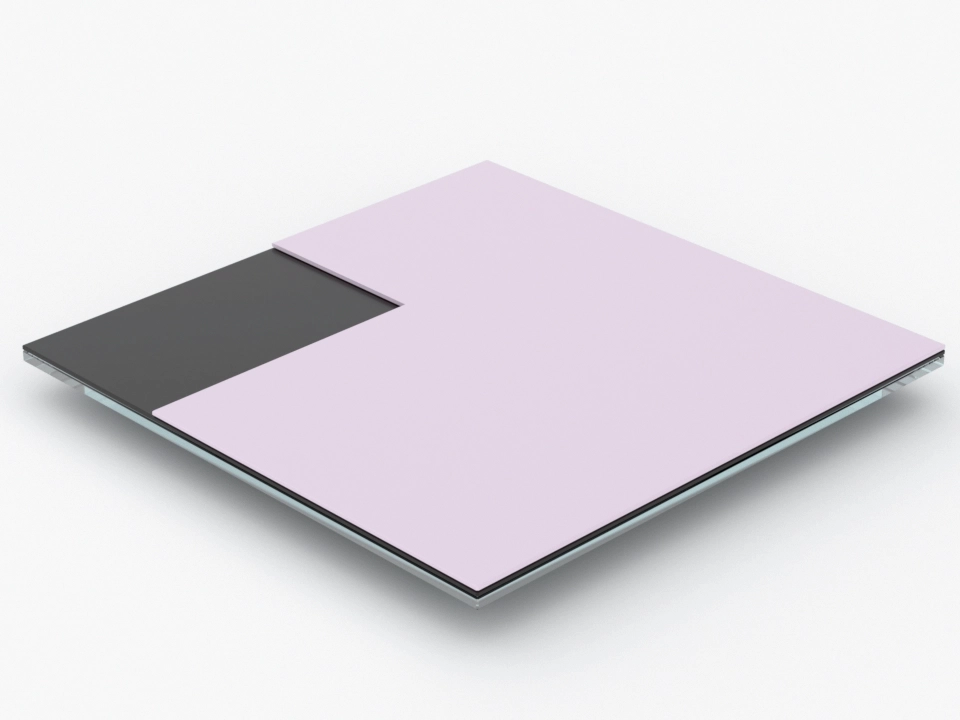
03
Developing
The exposed areas are developed to reveal the pattern structure.
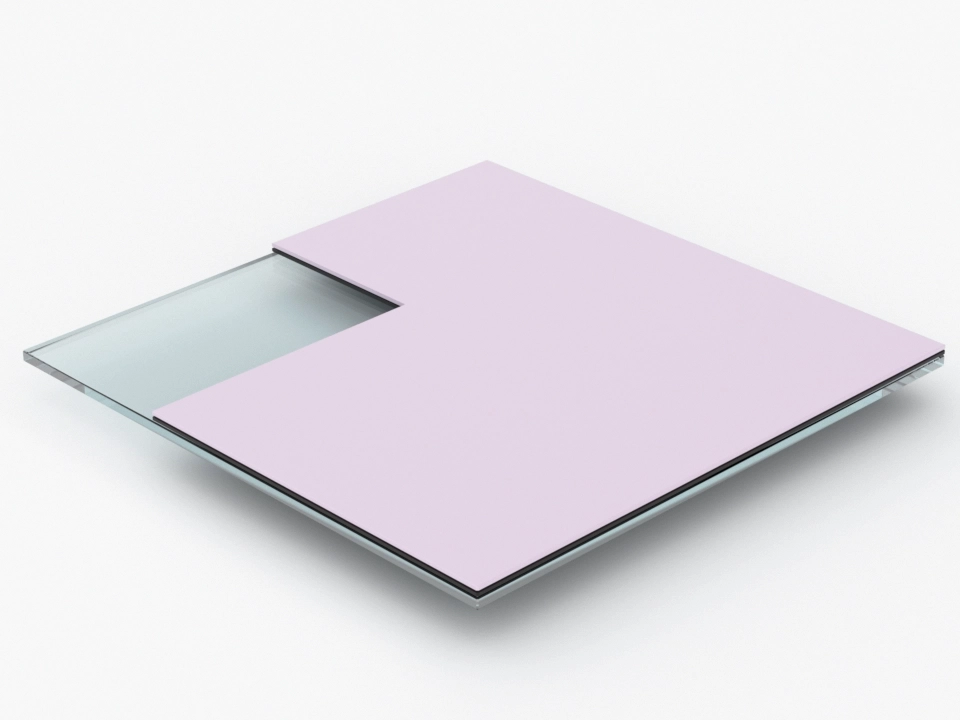
04
Etching
The chrome layer is etched to form clean, high-contrast features with sharp edges.
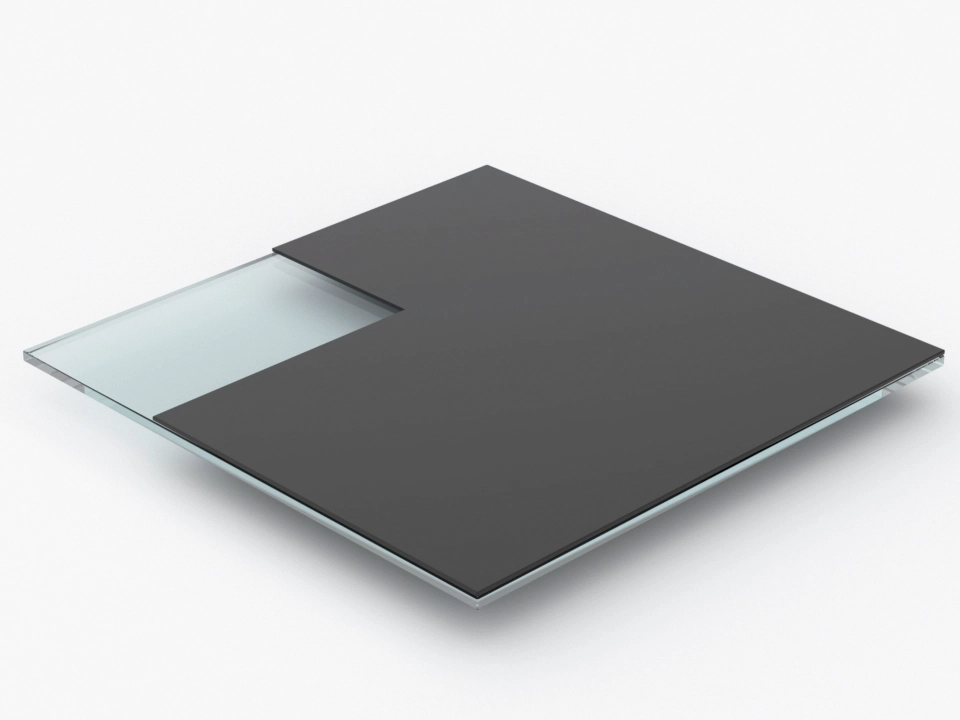
05
Stripping & Cleaning
Residual photoresist and impurities are removed to achieve a smooth, flawless surface.
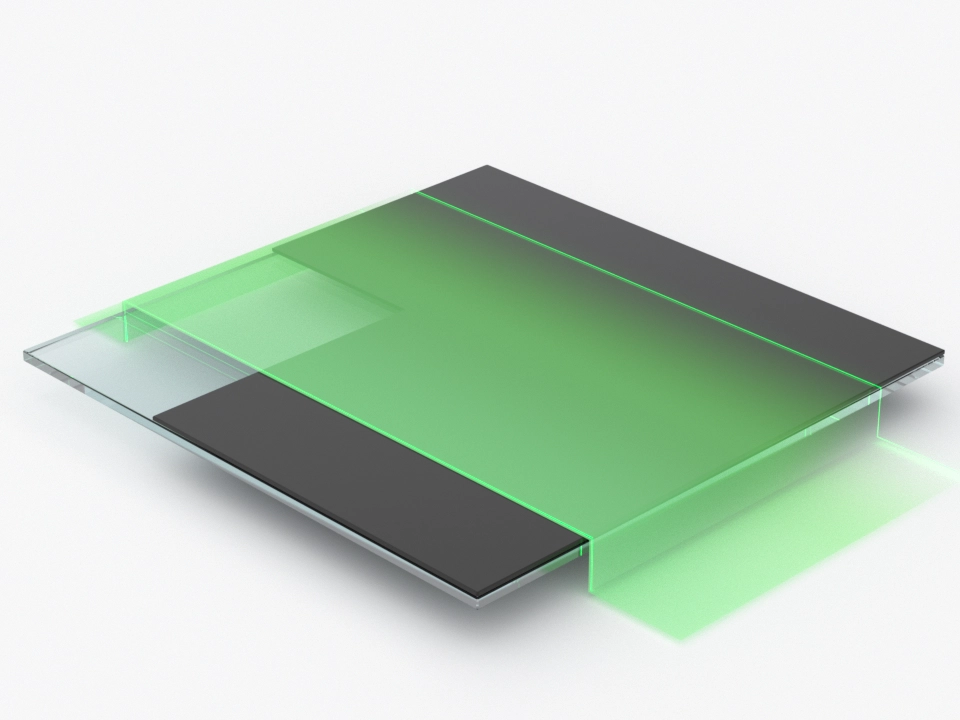
06
Checking & Repair
Each target is carefully inspected. Any defects are corrected to maintain micron-level accuracy.
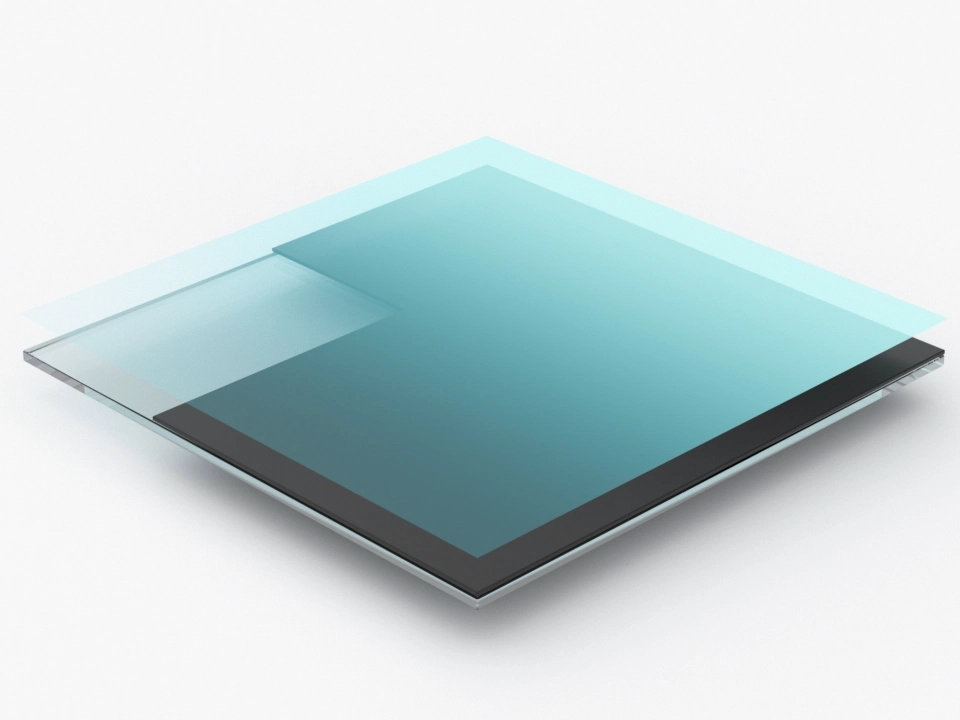
07
Pellicle Mounting
A protective pellicle film can be added to prevent dust contamination, especially for demanding environments.
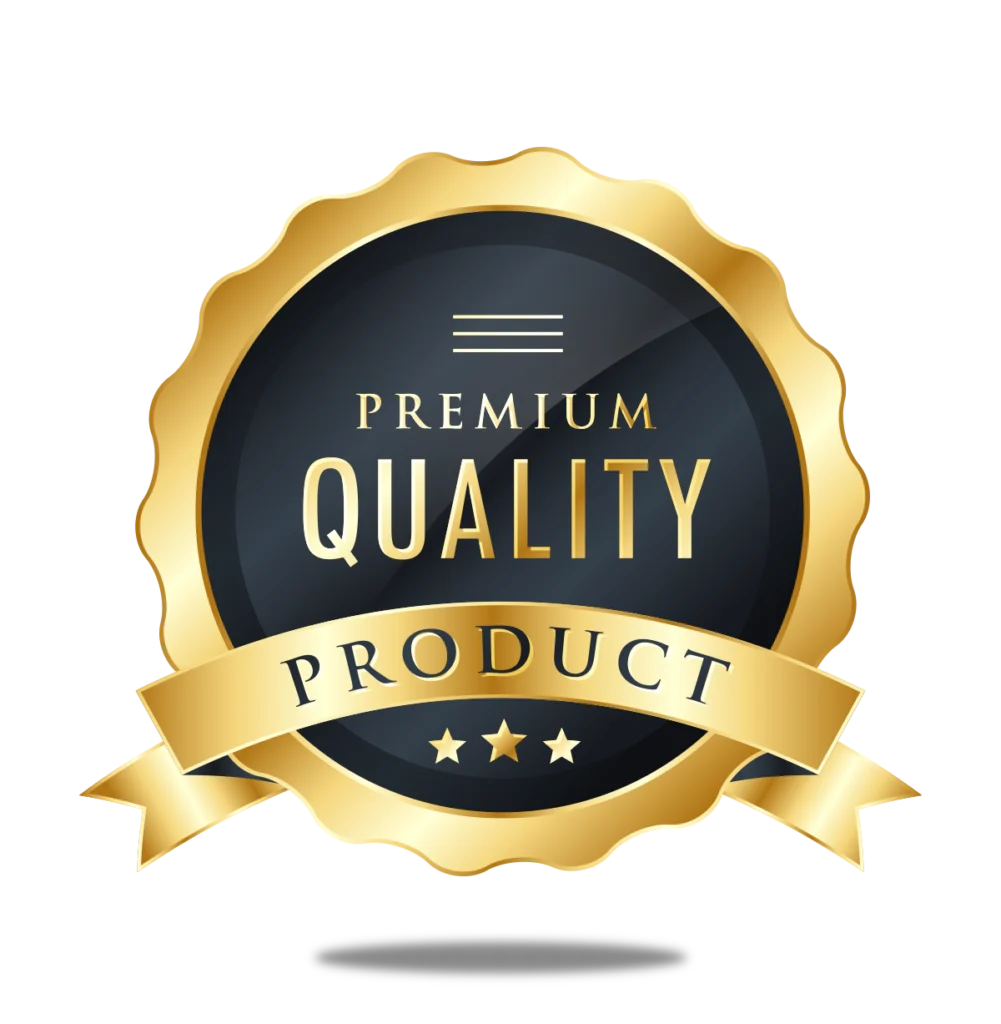
08
Quality Assurance
Every calibration target undergoes strict quality checks to ensure it meets industrial precision standards before shipment.
Minimum Feature Accuracy/Space
Types of Chrome Coating on Glass Test Target
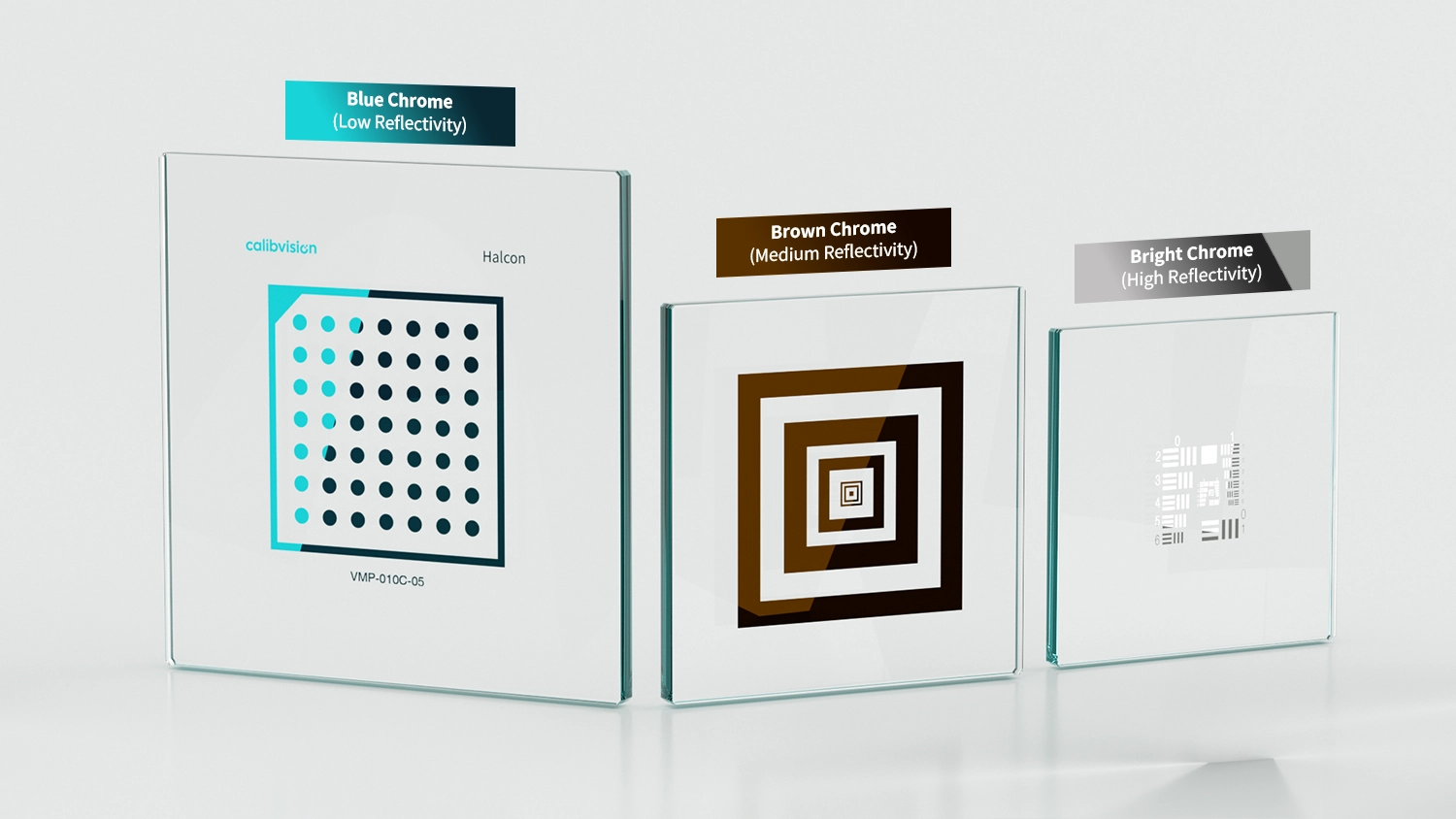
| Chrome Type | Blue Chrome | Brown Chrome | Bright Chrome |
|---|---|---|---|
| Reflectivity | Low Reflectance(8–20%) | Standard Reflectance(10–30%) | High Reflectance(55–70%) |
| Key Advantages |
Superior uniformity performance Minimizes ambient light interference Excellent contrast in low-light conditions |
Balanced reflectivity for versatile use Performs well under strong illumination Suitable for outdoor environments |
Maximum light reflection for low-light scenarios Enables faster positioning and detection Ideal for high-speed applications |
Thermal Expansion Coeff
Glass expands when heated and contracts when cooled.
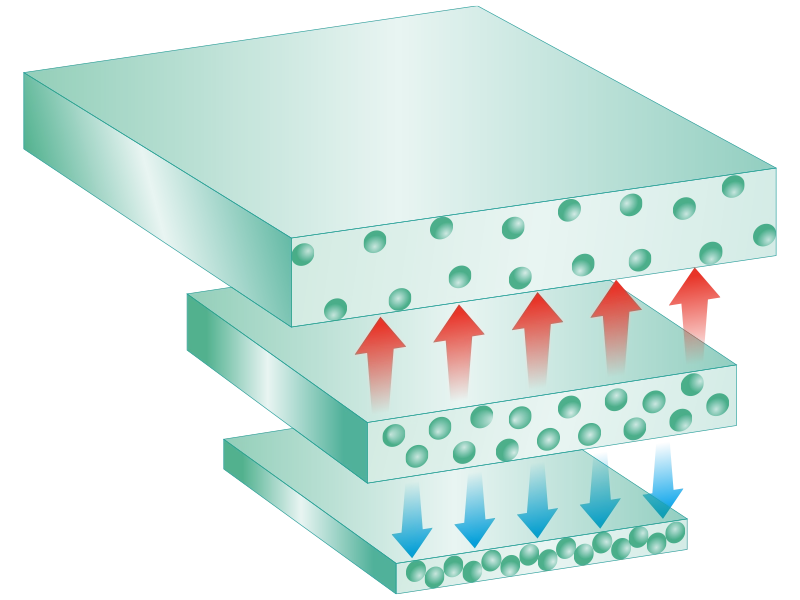
What is Thermal Expansion Coeff in Glass Substrates?
| Parameters | Quartz Glass (Fused Silica) | Soda Lime Glass (Float Glass) |
|---|---|---|
| Thermal Expansion Coeff (15-200'C) | <8.0x10-6/K | <5.0x10-7/K |
| Expansion Ratio (20-200C) | 0.00085% | 0.00006% |
| Real-World Expansion Impact of 1Meter | Im glass changes by 8.5um per 1℃ | Im glass changes by 0.6um per 1°C |
| Temperature Stability | Standard stability | 14x more stable |
| Best Applicationsy | General-purpose testing | Precision measurement systems |
Tips to Prons & Cons
One of the advantages of quartz glass is Low Thermal Expansion Rate (CTE): <5.0*107, it delivers superior thermal stability (0.55um/°C vs 8.5um/°C). Essential for precision measurements, optional for general testing applications.
Unless you need exceptional thermal stability, soda lime glass delivers excellent performance at a fraction of the cost of quartz glass.
Superior Light Transmission
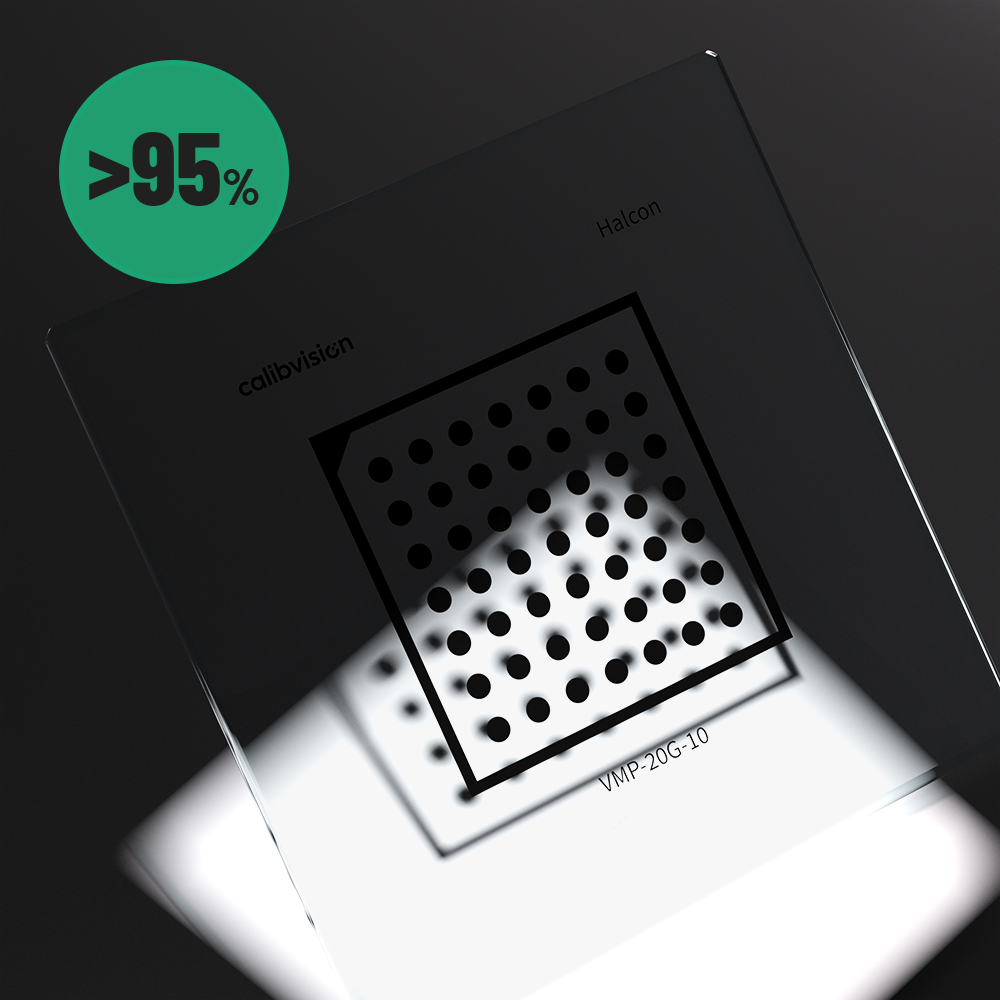
Quartz Glass (Fused Silica): Transmission Rate >95% at 550nm
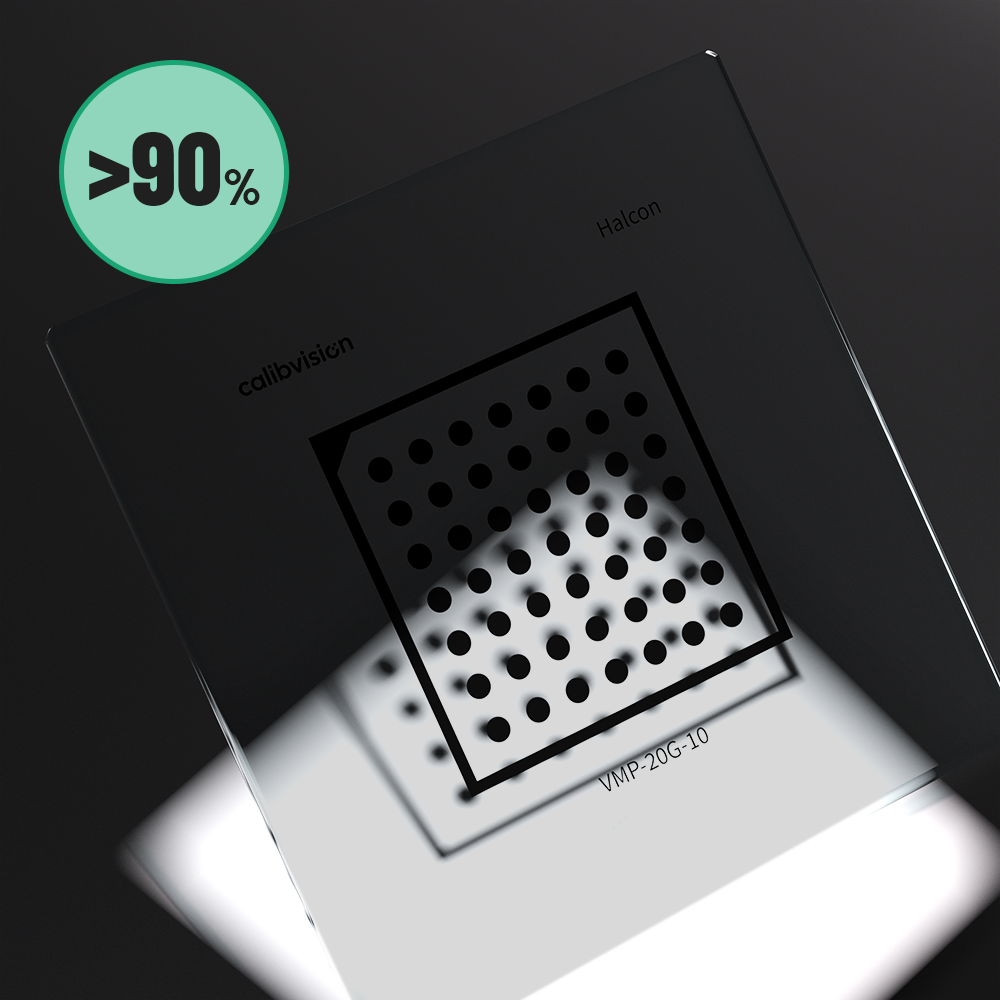
Soda Lime Glass (Float Silica): Transmission Rate >90% at 550nm
Why OD Matters in Calibration Targets
Optical Density (OD) determines contrast. Contrast determines accuracy.
A proper OD ensures precise corner detection, stable calibration results, and reliable performance in any lighting environment.
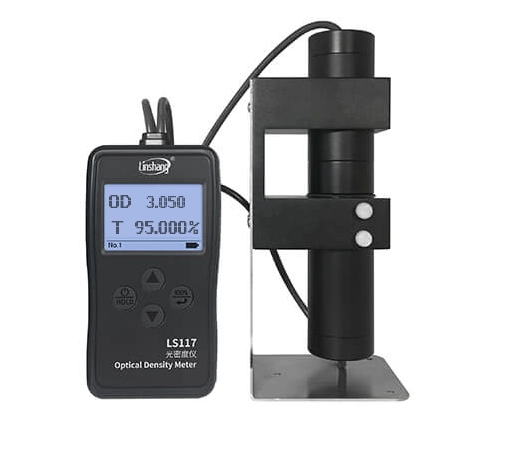
OD Specifications by Application
| Application Type | Required OD | Purpose |
|---|---|---|
| Standard Vision | OD 3-4 | General purpose calibration |
| High Precision | OD 4-5 | Sub-pixel accuracy requirements |
| NIR Applications | OD > 4.5 | Near-infrared wavelength optimization |
| Research Grade | OD> 5 | Ultimate contrast for specialized applicationsUltimate contrast for specialized applications |
Ultra-Smooth Surface
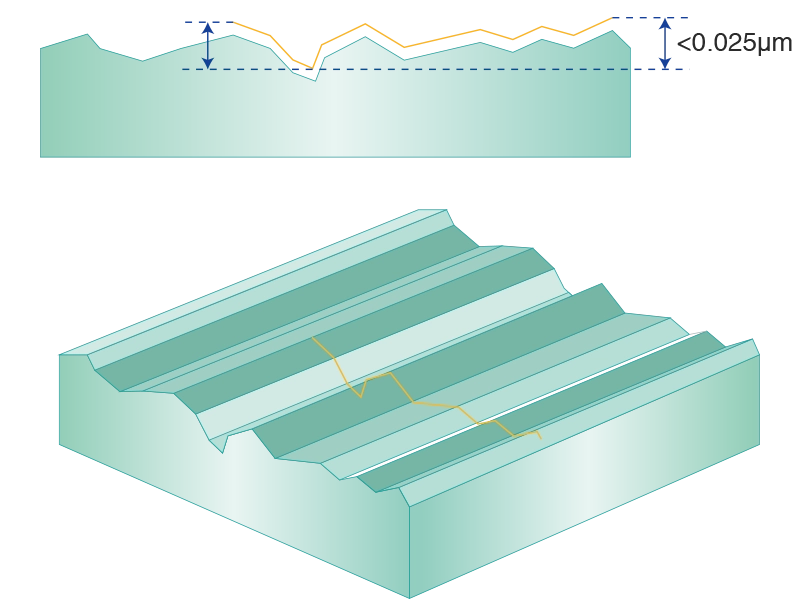
Surface Flatness Comparison
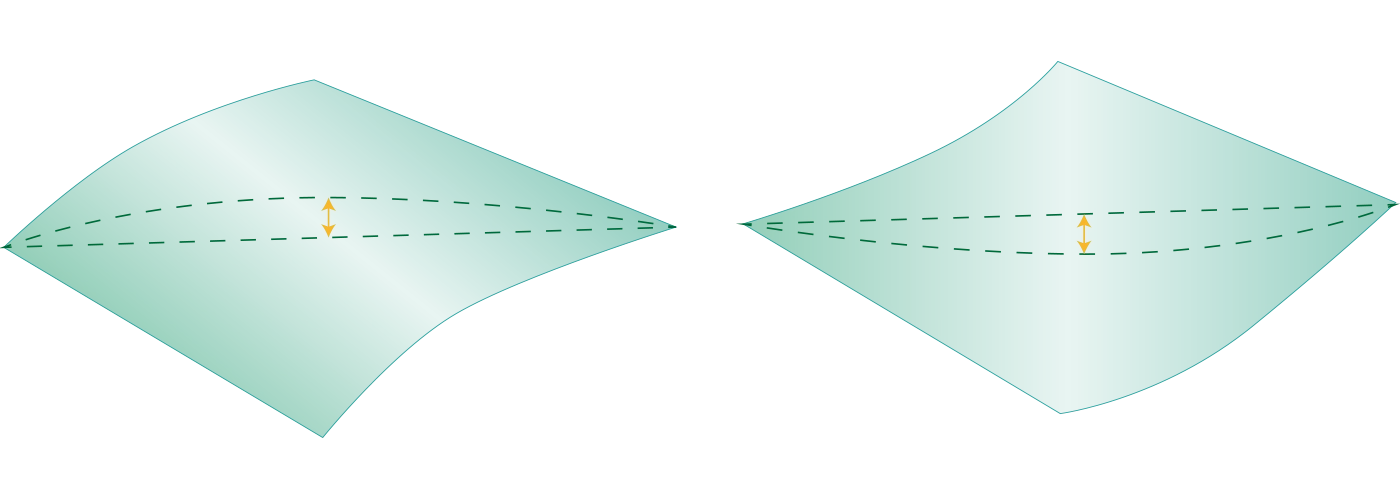
| Glass Type | Soda Lime Glass (Standard Float Glass) | Quartz Glass (Fused Silica) |
|---|---|---|
|
Small Samples Surface Deviation |
<5μm (for sizes under 100mm) | <1μm (for sizes under 50mm) |
|
Medium Samples Surface Deviation |
<20μm (for sizes under 200mm) | <2μm (for sizes under 100mm) |
|
Large Samples Surface Deviation |
<50μm (for sizes over 200mm) | <5μm (for sizes over 100mm) |
Product Overview
These calibration patterns are made from high-quality soda-lime glass, offering excellent stability and durability for daily use in machine vision and precision measurement environments. They are widely used for calibrating optical systems, XY stages, and various 2D measurement setups.
With a feature-to-feature accuracy of up to 1 micron, the targets provide the precision required for system testing, alignment, and performance verification. You can select different dot sizes and spacing options depending on your specific calibration needs.
Grid arrays are commonly used to check and correct imaging distortion. In an ideal system, all rows and columns should remain perfectly perpendicular. If the captured image shows bent or curved grids, the distortion pattern can be analyzed and used for system compensation.
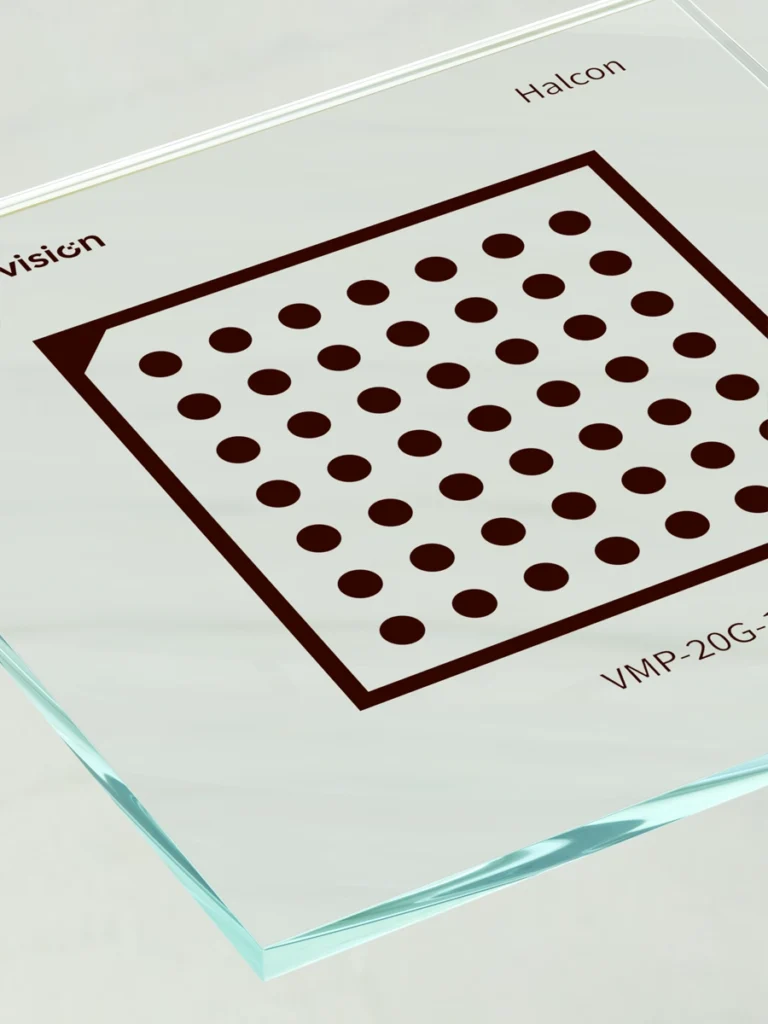
VisionMark™ Pro Series - Standard Halcon Series
Model Number Breaking Down: VMP-100G-80

Halcon Calibration Targets Overview Table
| Model | Substrate Material | Overall Size (mm) | Active Pattern Area (mm) | Dot Diameter ø(mm) | Dot Spacing (mm) | Dot Array | Dot Position Accuracy | Details |
|---|---|---|---|---|---|---|---|---|
| VMP-010G-02 | Soda Lime Glass | 10 x 10 | 2.0 x 2.0 | 0.25 | 0.5 | 7 x 7 | ±1μm | |
| VMP-010G-03 | Soda Lime Glass | 10 x 10 | 3.0 x 3.0 | 0.1875 | 0.375 | 7 x 7 | ±1μm | |
| VMP-010G-05 | Soda Lime Glass | 10 x 10 | 5.0 x 5.0 | 0.312 | 0.625 | 7 x 7 | ±1μm | |
| VMP-010G-06 | Soda Lime Glass | 10 x 10 | 6.0 x 6.0 | 0.375 | 0.75 | 7 x 7 | ±1μm | |
| VMP-020G-10 | Soda Lime Glass | 20 x 20 | 10 x 10 | 0.625 | 1.25 | 7 x 7 | ±1μm | |
| VMP-030G-20 | Soda Lime Glass | 30 x 30 | 20 x 20 | 1.25 | 2.5 | 7 x 7 | ±1μm | |
| VMP-040G-30 | Soda Lime Glass | 40 x 40 | 30 x 30 | 1.875 | 3.75 | 7 x 7 | ±1μm | |
| VMP-050G-40 | Soda Lime Glass | 50 x 50 | 40 x 40 | 2.5 | 5.0 | 7 x 7 | ±1μm | |
| VMP-060G-50 | Soda Lime Glass | 60 x 60 | 50 x 50 | 3.125 | 6.25 | 7 x 7 | ±1μm | |
| VMP-068G-60 | Soda Lime Glass | 68 x 68 | 60 x 60 | 3.75 | 7.5 | 7 x 7 | ±1μm | |
| VMP-076G-60 | Soda Lime Glass | 76 x 76 | 60 x 60 | 3.75 | 7.5 | 7 x 7 | ±1μm | |
| VMP-100G-80 | Soda Lime Glass | 100 x 100 | 80 x 80 | 5.0 | 10.0 | 7 x 7 | ±1μm | |
| VMP-110G-100 | Soda Lime Glass | 110 x 110 | 100 x 100 | 6.25 | 12.5 | 7 x 7 | ±1μm | |
| VMP-127G-100 | Soda Lime Glass | 127 x 127 | 100 x 100 | 6.25 | 12.5 | 7 x 7 | ±1μm | |
| VMP-135G-120 | Soda Lime Glass | 135 x 135 | 120 x 120 | 6.0 | 12.0 | 9 x 9 | ±1μm | |
| VMP-010C-02 | Ceramic | 10 x 10 | 2.0 x 2.0 | 0.25 | 0.5 | 7 x 7 | ±1μm | |
| VMP-010C-03 | Ceramic | 10 x 10 | 3.0 x 3.0 | 0.1875 | 0.375 | 7 x 7 | ±1μm | |
| VMP-010C-05 | Ceramic | 10 x 10 | 5.0 x 5.0 | 0.312 | 0.625 | 7 x 7 | ±1μm | |
| VMP-010C-06 | Ceramic | 10 x 10 | 6.0 x 6.0 | 0.375 | 0.75 | 7 x 7 | ±1μm | |
| VMP-020C-10 | Ceramic | 20 x 20 | 10 x 10 | 0.625 | 1.25 | 7 x 7 | ±1μm | |
| VMP-030C-20 | Ceramic | 30 x 30 | 20 x 20 | 1.25 | 2.5 | 7 x 7 | ±1μm | |
| VMP-040C-30 | Ceramic | 40 x 40 | 30 x 30 | 1.875 | 3.75 | 7 x 7 | ±1μm | |
| VMP-050C-40 | Ceramic | 50 x 50 | 40 x 40 | 2.5 | 5.0 | 7 x 7 | ±1μm | |
| VMP-060C-50 | Ceramic | 60 x 60 | 50 x 50 | 3.125 | 6.25 | 7 x 7 | ±1μm | |
| VMP-068C-60 | Ceramic | 68 x 68 | 60 x 60 | 3.75 | 7.5 | 7 x 7 | ±1μm | |
| VMP-076C-60 | Ceramic | 76 x 76 | 60 x 60 | 3.75 | 7.5 | 7 x 7 | ±1μm | |
| VMP-100C-80 | Ceramic | 100 x 100 | 80 x 80 | 5.0 | 10.0 | 7 x 7 | ±1μm | |
| VMP-110C-100 | Ceramic | 110 x 110 | 100 x 100 | 6.25 | 12.5 | 7 x 7 | ±1μm | |
| VMP-127C-100 | Ceramic | 127 x 127 | 100 x 100 | 6.25 | 12.5 | 7 x 7 | ±1μm | |
| VMP-135C-120 | Ceramic | 135 x 135 | 120 x 120 | 6.0 | 12.0 | 9 x 9 | ±1μm |
Substrate Poperties Comparison
See key features between different materials and select the suitable one according to your applications.
| Property |
|---|
| Illumination |
| Thermal Expansion |
| Feature Accuracy |
| Min Feature Size |
| Surface Flatness |
| Max Temperature |
| Transmission |
| Cost |
| Quartz Glass |
|---|
| Backlighting/Tramsmissive |
| <5x10-7/℃ |
| ±0.1μm |
| 0.5μm |
| ~5μm |
| 1100℃ |
| >93% |
| Medium |
| Soda Lime Glass |
|---|
| Backlighting/Tramsmissive |
| 8.0 × 10⁻⁶ /℃ |
| ±1μm |
| 0.7μm |
| ~10μm |
| -300℃ |
| >90% |
| Low |
| Matte Ceramic |
|---|
| Front Lighting/Reflective |
| 7.2x10-7/℃ |
| ±2μm |
| 3μm |
| 10-80m |
| 80℃ |
| N/A (Opaque) |
| High |
Min. Feature Size - 5 Types of Target Substrate
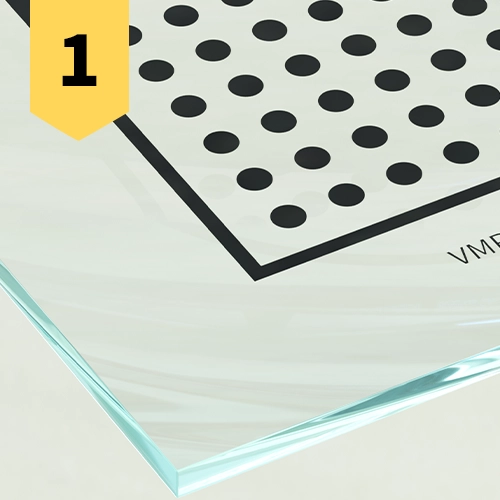
Quartz Glass
≥0.5μm
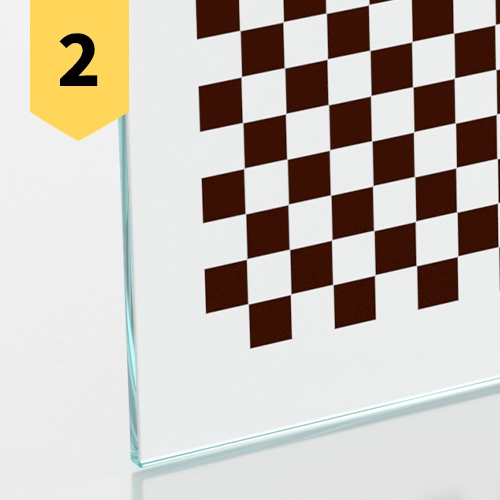
Soda Line Glass
≥1μm
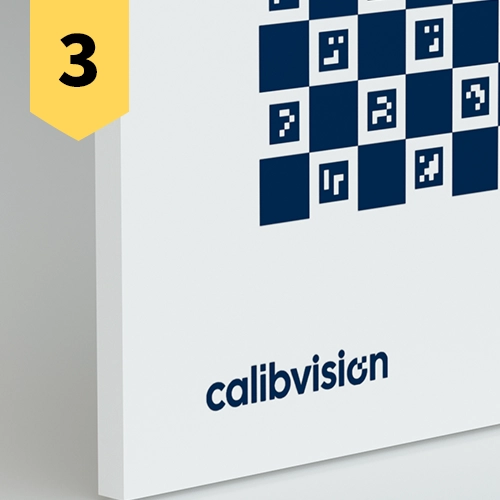
Matte Ceramic
≥2μm

Film
≥15μm
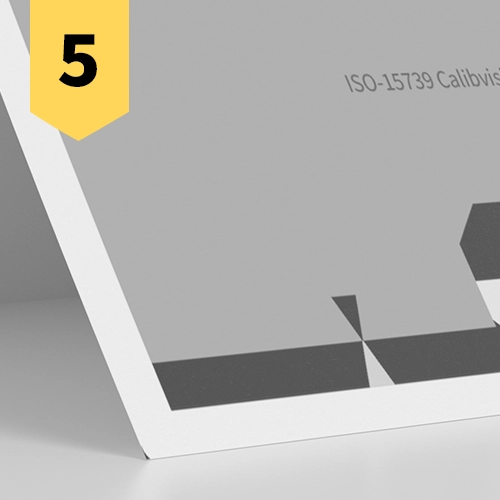
Photo Paper
≥0.3mm
Calibration Targets Material Selection Guide
Explore the key differences between glass and ceramic calibration targets.
Use the tabs below to compare materials, specifications and optical features in detail.
Halcon Calibration Target
on Ceramic
- High Position Accuracy
- ±2μm Feature Accuracy
- High Position Accuracy
- Low Thermal Expansion Coeff
| Accuracy Properties | |
|---|---|
|
Dot Diameter Accuracy (Minimum Line) |
±2μm |
|
Dot Position Accuracy (in Entire Pattern Area against ideal position) |
±2μm |
|
Dot Spacing Accuracy (Any 2 Neighbor Features) |
±1μm |
|
Distance Accuracy (from Chrome Pattern to Target Edge) |
±0.1mm |
| Production Process | Laser Writing |
| Optical Properties | |
| Substrate Material | Matte Ceramic/Glossy Ceramic |
| Coating Type | Blue Chrome |
| Reflectivity | < 7% @550nm |
| < 5% @650nm | |
| < 5% @750nm | |
| Coating Thickness | 100~120nm |
| Physical & Mechanical Properties | |
| Ceramic Substrate | 96% Alumina |
| Density | ≥ 3.66 g/cm³ |
| Thickness | 1mm/2mm/0.38mm/0.635mm (±0.1mm) |
| Surface Flatness | <30μm (Dimension<100mm) |
| <60μm (Dimension: <200mm) | |
| 200mm) | |
| Surface Roughness | <0.2-0.7μm |
| Thermal Expansion Coeff (40~400℃) | 6.7 × 10⁻⁶ /K |
| Regulatory Compliance | |
| ISO9001 | Verified |
| Reach 235 | Compliant |
| RoSH 2015 | Compliant |
|
Accuracy Certificate (3rd Party/CalibVision) |
Available on Request |
Chrome Coating Manufacturing Process Chart
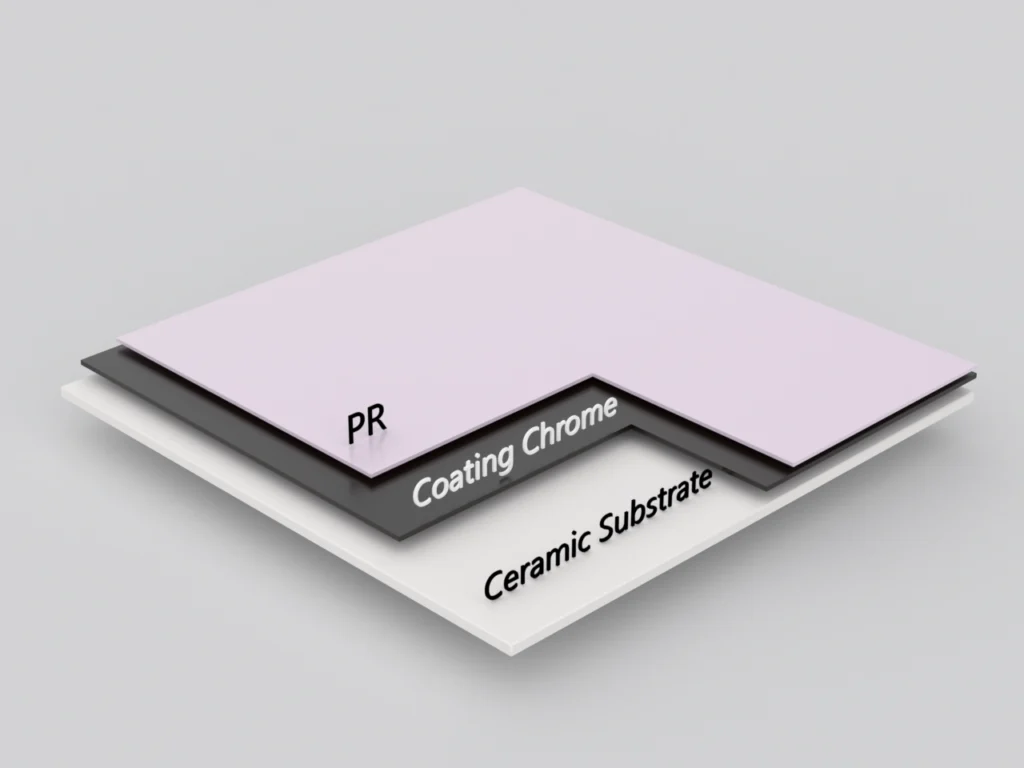
01
Substrate Material
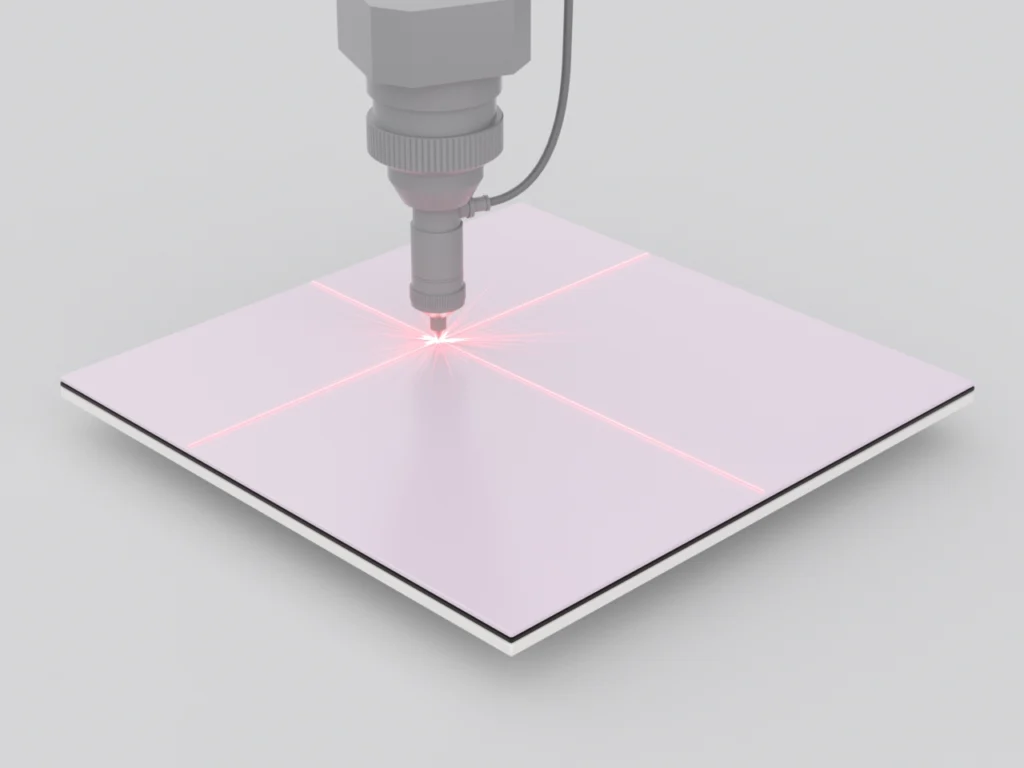
02
Laser Writing
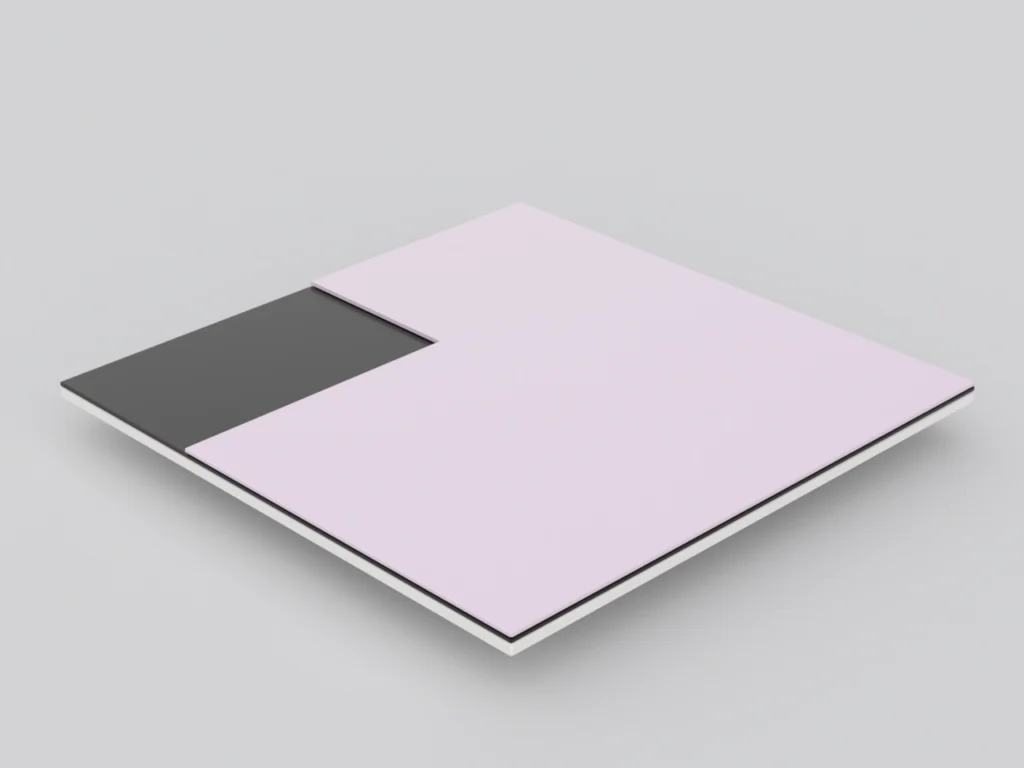
03
Developing
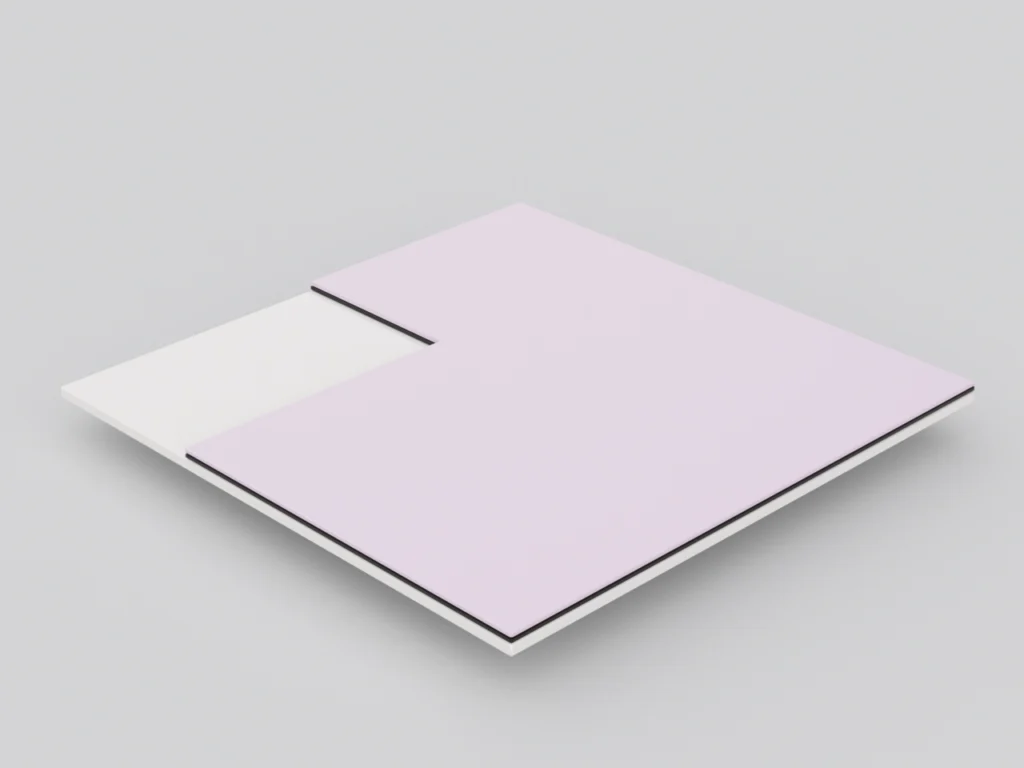
04
Etching
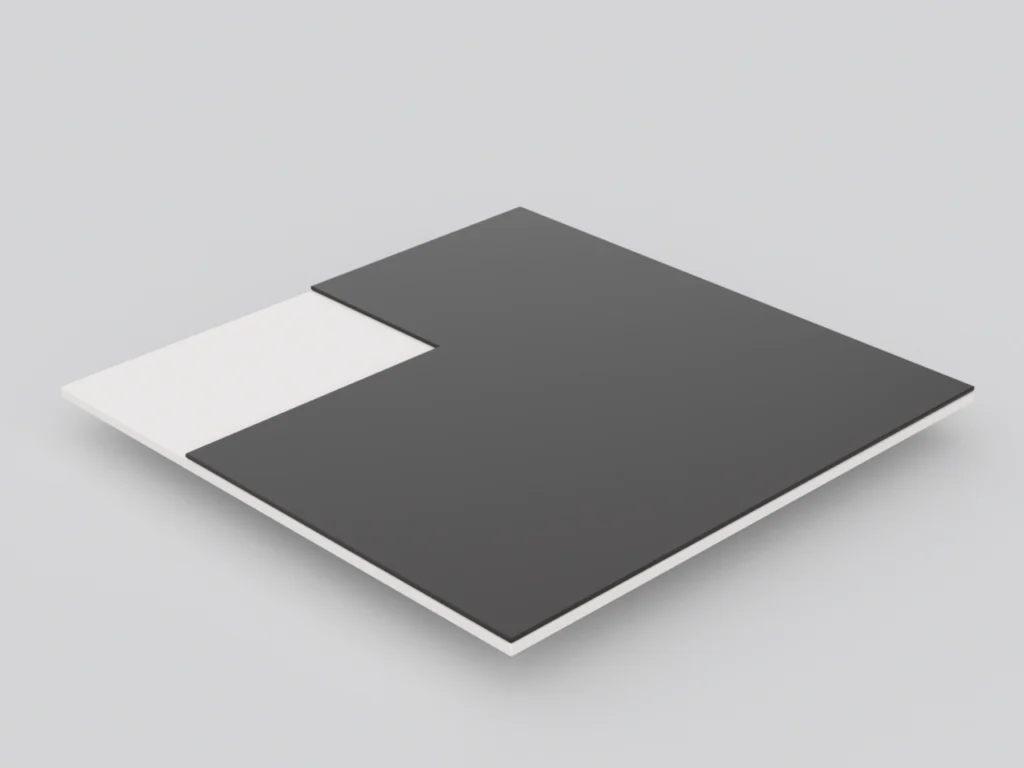
05
Stripping & Cleaning
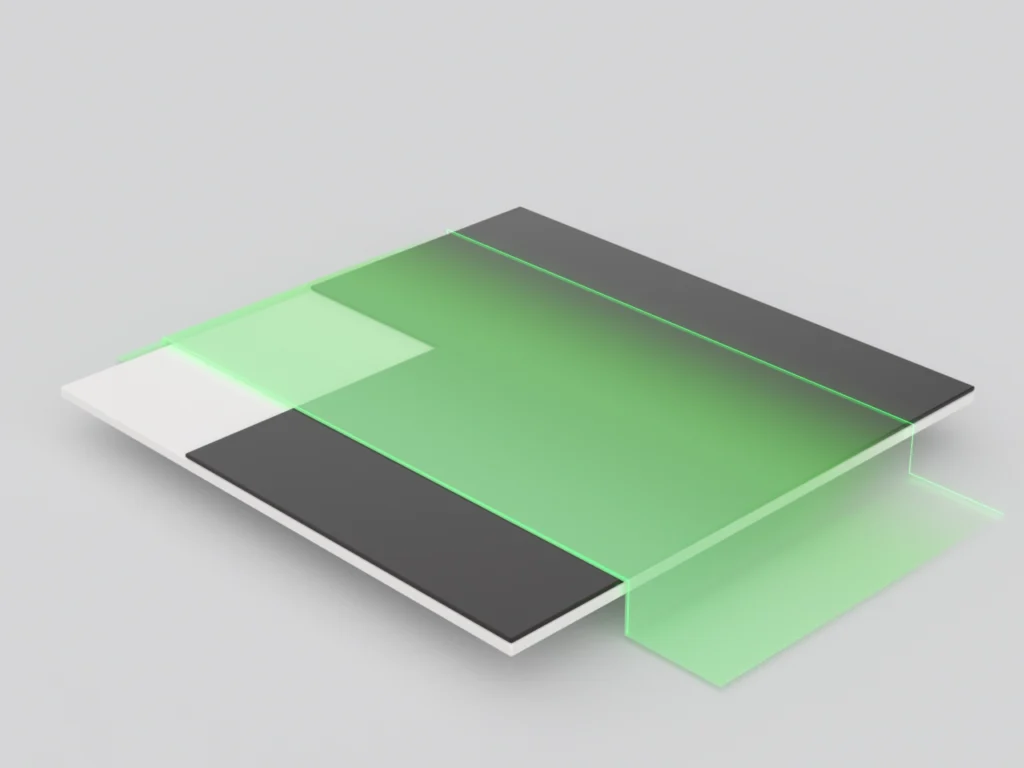
06
Checking & Repair
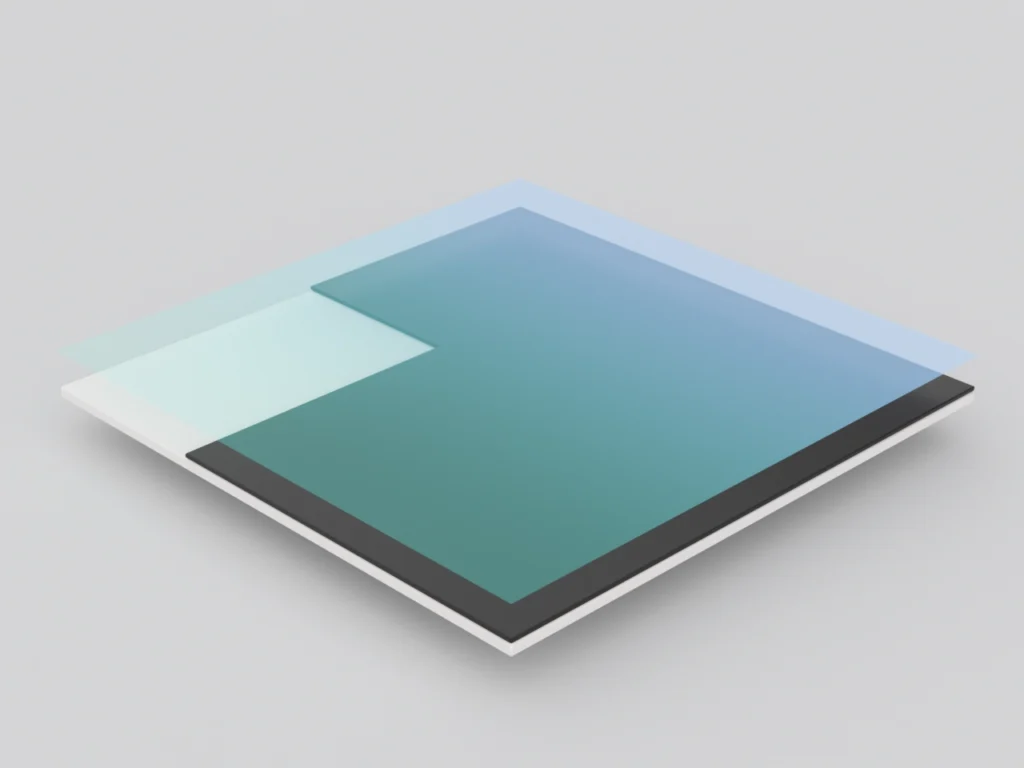
07
Pellicle Mounting

08
Quality Assurance
Minimum Line/space
Why Substrate Choice Matters for Your Application
Industries that demand the ultimate in calibration precision
| Coating Type | Matte Ceramic | Glossy Ceramic |
|---|---|---|
| Type |

|

|
| Minimum Line/space | 4μm | 2μm |
| Feature Accuracy | ±2μm | ±1μm |
| Overall Accuracy | ±2μm | ±1μm |
| Coating Type | Chrome | Chrome |
| Coating Glossy or Matte | Matte | Glossy |
Coating Thickness: 100-200nm
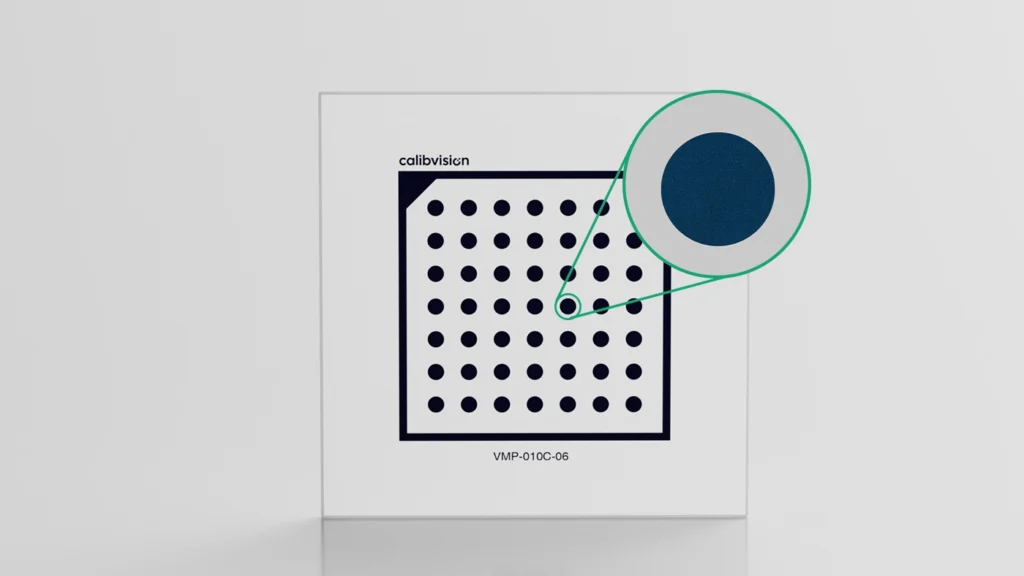
Positive/Negative
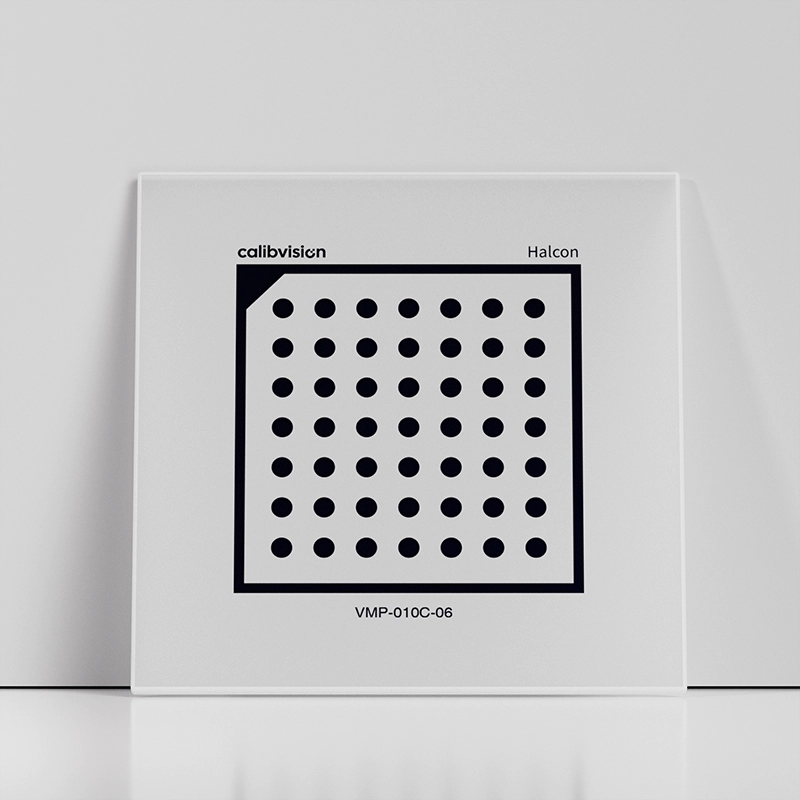
Postitive: Opaque Pattern, Clear Background.
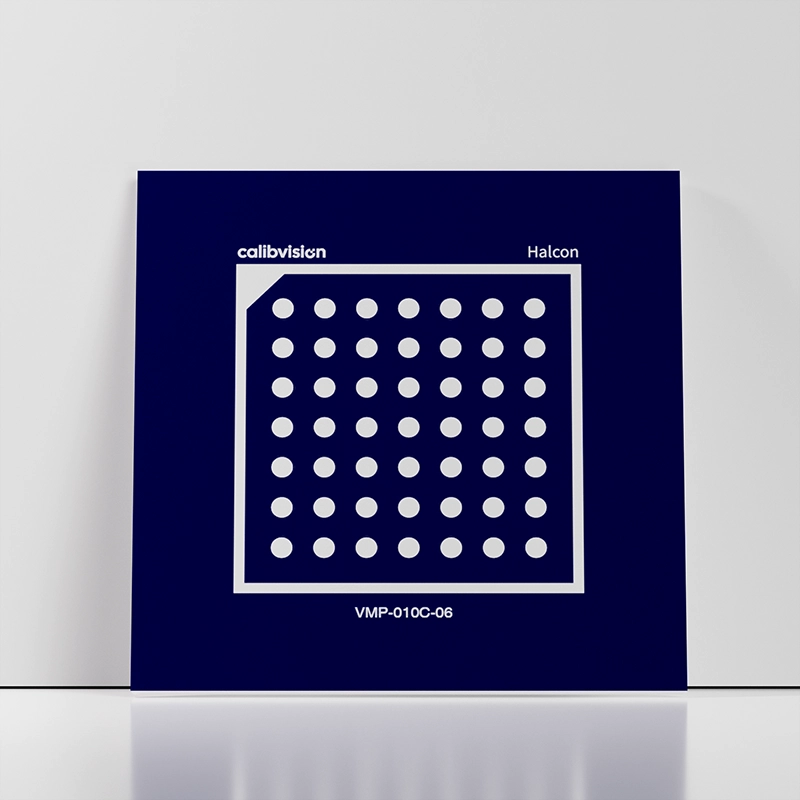
Negative: Clear Pattern, Opaque Background
Thermal Expansion Coeff
The ceramic expand with heat and contract with cold.
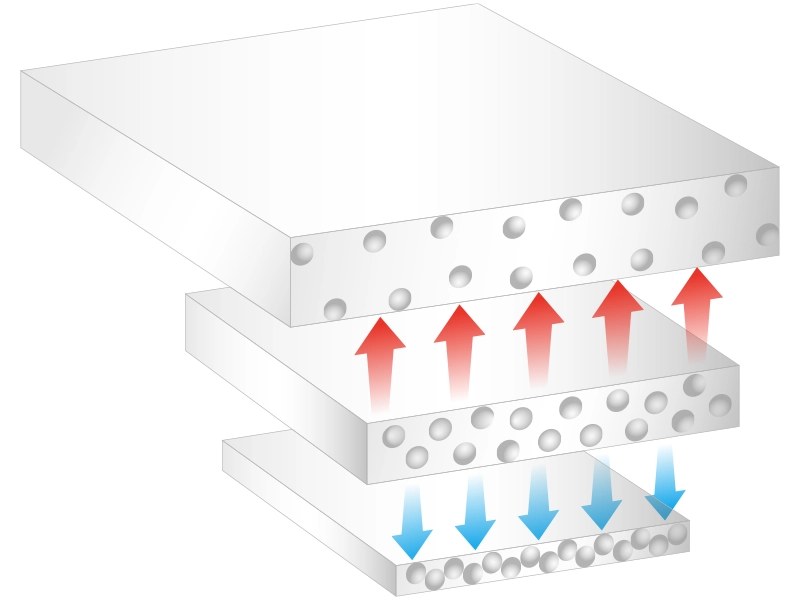
What is Thermal Expansion Coeff in Ceramic Substrates?
Surface Flatness
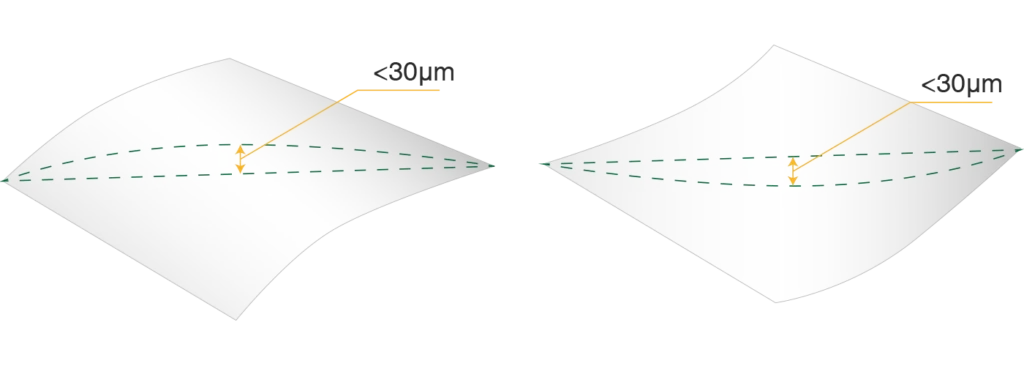
| Dimension | <100mm | <200mm | >200mm |
|---|---|---|---|
| Surface Flatness | <30μm | <60μm | <100μm |
Surface Roughness <0.2-0.7μm
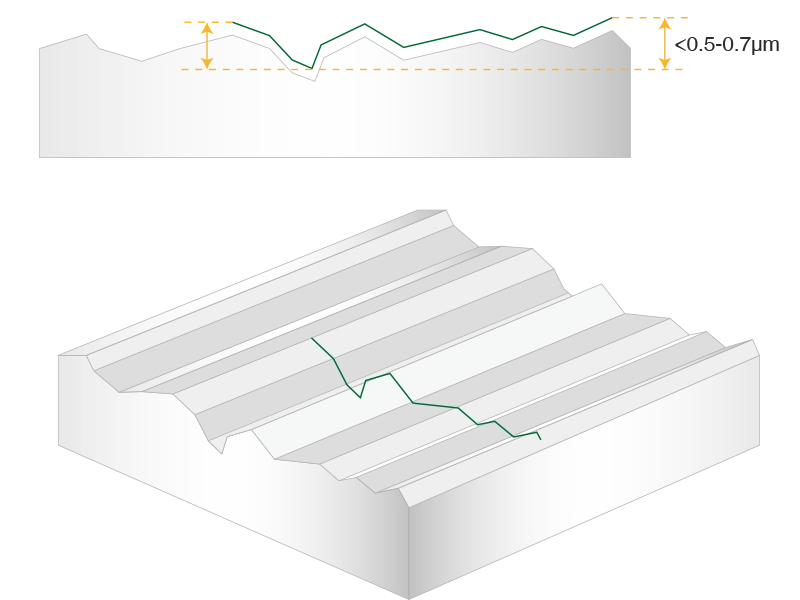
Thickness
